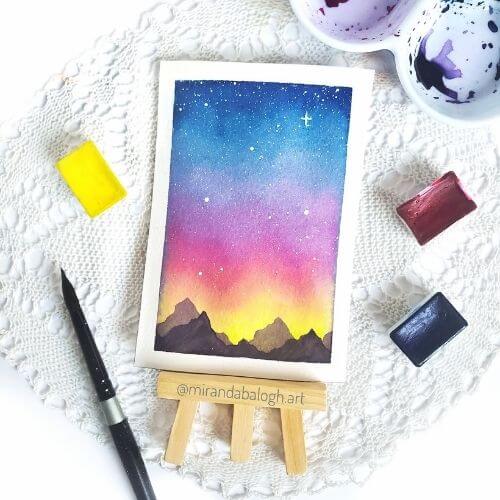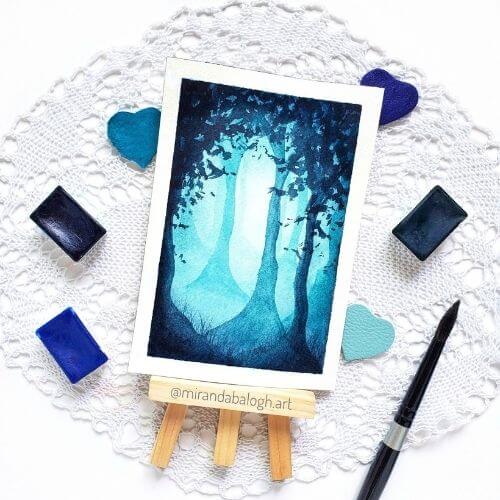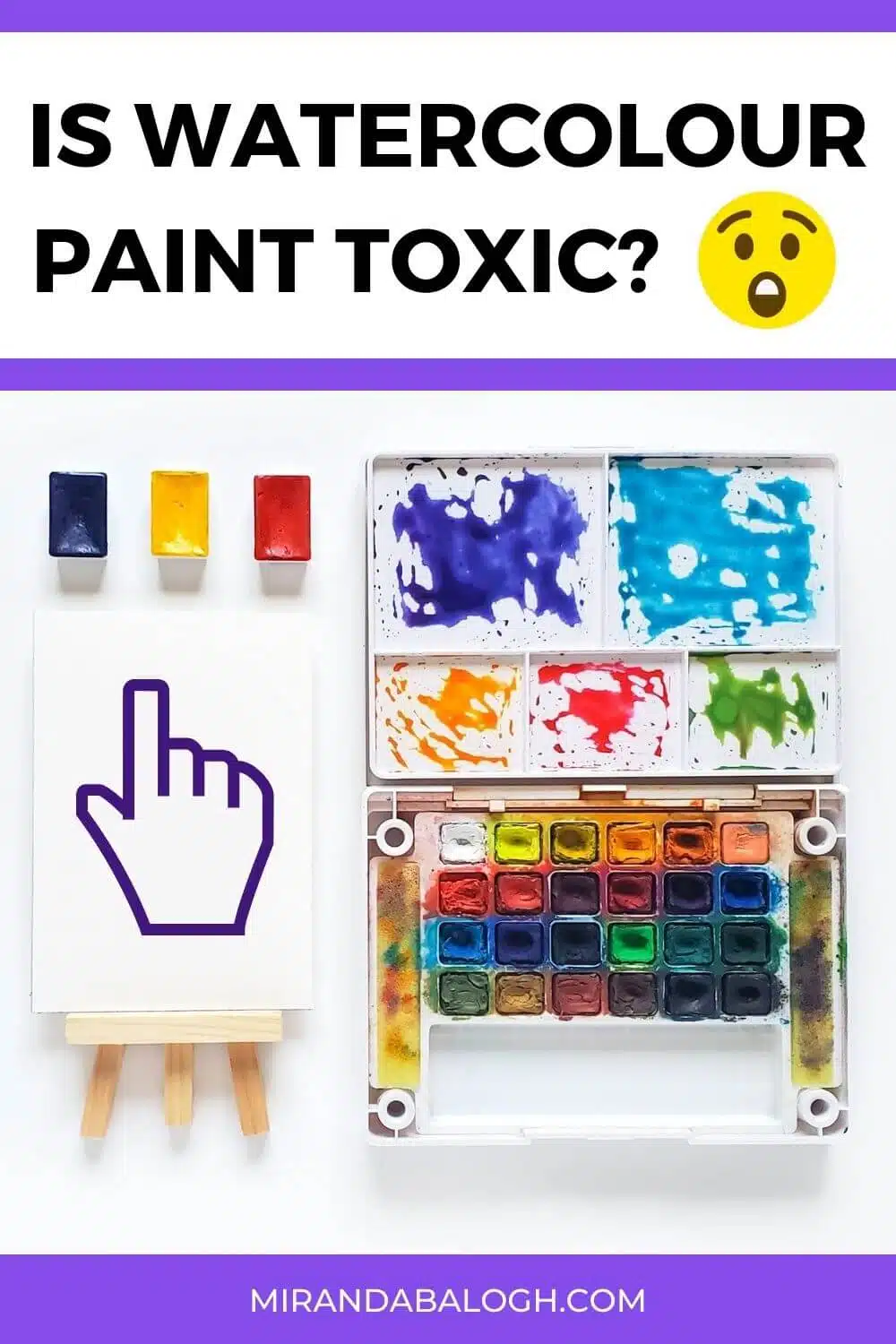As a watercolourist, your worst nightmare is probably when you’ve spent a lot of time working on a painting, only to realize that you’ve accidentally overworked watercolour paper.
In such circumstances, you feel dismayed by the fact that all your effort may have gone to waste if you can’t fix the paper.
Overworked watercolour paper occurs when pigments are over-blended or when too many layers of paint have been added. As well, paper can become overworked if the artist uses too many brushstrokes to distribute the paint, which results in blotchy and uneven streaks.
So, you wonder: How do you fix an overworked watercolour painting and solve these common watercolour paper problems?
The solutions are actually pretty simple, as there are numerous ways to fix overworked, buckled, and torn paper.
Keep reading to discover the answers!
Table of Contents
1. How Do You Fix Overworked Watercolour Paper?
Prevention is the best defense when it comes to avoiding overworking watercolour.
So, once of the best things to do is to draw a preliminary sketch or a thumbnail of your composition before you begin painting.
By doing so, you reduce the chances of making a mistake when it comes to painting the correct proportions or identifying the light and shadows properly.
In the event that you accidentally make a mistake by overworking the paper, you can use a Mr. Clean Magic Eraser to fix it.
All you have to do is use the damp sponge to lift the paint from watercolour blotches or streaky sections of the paper.
Related: For more unique watercolour tips and tricks, check out this useful blog.
Now, if you’re someone who gets easily frustrated, then the best thing to do is to walk away from your painting for a while to take a break.
If you paint while you’re stressed, you’re more likely to nit-pick over every little until you end up with overworked watercolour paper.
So if you struggle with perfectionism as an artist, simply walk away from your painting for a while and then revisit it with fresh eyes.
Another solution is to limit your painting time to only 30 minutes or an hour.
By doing do, you’re giving yourself a designated window of time in which to paint. This strategy is beneficial for 2 reasons:
- It forces you to paint at a consistent pace so that you don’t slow down to obsess over the small details
- It disciplines you to work for a period of time, then allows you to take a break so that you don’t overwork yourself or the paper
Give these strategies a try to see if they help reduce your chances of ending up with overworked watercolour paper.
2. How Do You Fix Buckled Watercolour Paper?
Don’t you just hate it when your watercolour paper buckles and distorts into a weird wavy shape?
Although it’s annoying, you can solve this problem rather easily.
Buckled watercolour paper is created when the paper is drenched with too much water, which warps the contours of the paper into a wavy pattern. To fix this problem, you can place a stack of heavy books or an equally heavy object on top of the paper to smoothen out the bumps and valleys.
Other heavy objects include a backpack, a box of supplies, a laptop, a block of wood, and so on.
If you’re interested, you can check out a visual demonstration of flattening buckled watercolour paper in this YouTube video.
But, as I’ve already mentioned, the best solution to solve this watercolour problem is to take measures to prevent the paper from buckling in the first place.
To do this, you need to identify what kind of paper you’re using. There are 2 main types of paper:
- Low-cost, affordable watercolour paper that is made from cellulose or wood pulp. This type of paper doesn’t hold a lot of water and it’s notorious for buckling, warping, and tearing rather easily
- High-quality, expensive watercolour paper made from 100% cotton. This type of paper is very water-absorbent, durable, and much stronger than cheaply made watercolour paper
Related: If you’d like to learn more about the best watercolour paper to buy, check out this popular article about my most recommended watercolour supplies.
My best advice is to invest in high-quality watercolour paper because it makes such a world of difference when it comes to the outcome of your paintings.
Since 100% cotton paper is very water-absorbent, you can add many layers of paint and use more water without worrying about it buckling.
This, however, is not possible if you paint on cellulose or wood pulp paper.
So reduce your chances of resulting in overworked watercolour paper by purchasing high-quality 100% cotton paper.
3. How to Fix Torn Watercolour Paper?
One of the worst things that can happen when you’ve overworked watercolour paper is accidentally tearing the surface of the paper.
Oftentimes, this happens when you scrub the paper with your paintbrush too roughly. Or it can happen if you lift pigment or water off of the same spot too many times.
Unfortunately, if you tear your watercolour paper, there aren’t a lot of ways to fix it.
Torn watercolour paper can only be fixed by using tape (or glue) to put the ripped paper back together. To do this, flip over your painting and use a piece of tape that matches the length of the tear. Place the tape over the rip as if it were a bandage and then press down to make it stick.
It’s very important to make sure that you place the tape on the backside of the paper so that it doesn’t cover your beautiful artwork.
As well, it should be noted that transparent glue can work, too. However, this option can be rather messy depending on the type you use, so proceed with caution.
And keep in mind that your glue needs to be high-quality, otherwise the torn pieces of paper won’t stick together for very long.
Related: Check out this super popular article to discover 7 useful ways to fix watercolour mistakes beginners make.
Lastly, if you happen to tear your watercolour paper by peeling the tape off once you’ve completed the painting, there’s an easy fix.
Get a small piece of sandpaper and gently rub it against the torn or frayed area of the paper.
Doing this creates friction, and the friction will even out the ridges of the paper so that it looks relatively smooth overall.
This solution might not be able to completely reverse the damage, but it does make the torn paper much less noticeable.
As well, it will look easier on the eyes.

4. How Do You Fix Overworked Paint?
Sometimes, the problem isn’t just your paper.
The problem can also be how you’re applying watercolour paint onto the paper.
You can fix overworked paint by making sure that your watercolour layers are dry before you add a new layer of paint. This will prevent the pigments from mixing and producing muddy colours. As well, you can add darker pigment over your mistakes to hide and conceal them.
Or, if you also know how to paint with gouache, you can use your gouache paint to layer over the watercolour pigment,
This works very well for a few reasons:
- Gouache paint is opaque, so it will completely cover your translucent watercolour paint
- Gouache dries with a matte finish, so it can easily hide any mistakes that are beneath it
- Gouache has a thicker viscosity than watercolours, even when diluted
For these reasons, you might find it easier to use gouache to cover you mistakes rather than adding more watercolour pigment to hide your mistakes.
Conclusion
As you’ve learned in this article, there are many ways to deal with overworked watercolour paper.
But, alas, there are some situations in which you cannot repair damaged watercolour paper, such as when:
- The paper is torn and completely falling apart
- You’ve added too many layers of dark pigments (and you don’t own gouache paint to cover them)
- The soaked paper has become a pulpy mess
Luckily, you’ve learned that prevention is the best strategy to avoid making mistakes and accidentally overworking your painting.
So, use these tips the next time you sit down to paint and give them a shot. I bet you’ll be pleasantly surprised by have well they work!
As for your next times, I highly encourage you to check out the companion piece to this article which discusses the best ways to avoid mistakes and never ruin a watercolour painting!

Miranda Balogh
Artist & Online Educator






I am going to try this next time
Good luck!
I need to share this with my daughter! She’s learning to paint!
I hope she finds this information helpful!
I like your tip about stepping away from your painting for a bit or setting a designated period to work on your piece, especially if you’re a perfectionist! I tend to obsess over small mistakes and I think this tip would help avoid that
Speaking from experience, that tip will definitely help you overcome any perfectionist tendencies you might have. So give it a try!
I never knew I could use Magic Erasers!
If my paper is warped, I’m assuming I need to dry it completely before weighing it down with heavy books, is that right? Thanks!
Yes, that’s right! The paper needs to be completely dry because otherwise the damp pigment will get on the book and the painting will be ruined.